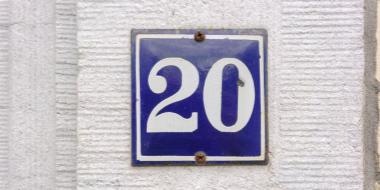Should you include your picture on your resume?
Wondering if you should include your photo on resumes? Discover if and when it’s a good idea and how to ensure your application looks professional.

When it comes to using a resume picture, USA millennials are leading the way. A whopping 42% are now using resume photos.(1) This may not seem like a big deal if you’re job hunting in a country where this is commonplace. However, in some places, the photo vs. no photo debate has been raging seemingly forever.
This article will break down when you should and shouldn’t use a resume picture, the regions in which a professional resume picture is expected, tips for how to take a good resume photo, and examples of a professional resume with photos and a resume without photos you can use as inspiration for your next job application.
Should you put your picture on your resume?
There are some instances where what you look like is integral to your ability to perform a certain job, like modelling or acting. In these cases, it is generally expected that you will submit photos along with your resume, and most employers will include specific instructions for how to do so.
It may also be acceptable to submit a headshot if you are applying for a high-profile public-facing role where you will be a visual representation of the company. When hiring for these types of positions, employers will generally want to ensure that candidates are pleasant-looking, approachable, and have a trustworthy demeanor. Again, if this is the case, the employer will likely ask for a photo.
If you feel that it’s appropriate for a potential employer to assess your looks as well as your professional qualifications, you can either include your photo directly on your resume, or add your LinkedIn URL to your resume header. That way, the employer can see what you look like in your LinkedIn profile photo, and you won’t have to use up valuable resume space on the picture.
Alternatively, you can submit your business card (that has a photo on it) with your application. However, not all online job application portals allow this.
When you should include a resume photo
- You live in a country where using a picture on resumes is expected
- You have taken a professional headshot for resumes (not just a selfie)
- You want to show more of yourself beyond your qualifications
When you shouldn’t include a resume photo
- You are job hunting in a country where a resume picture is not the norm
- You need to follow the law or want to prevent bias
- You need to save space to discuss your extensive qualifications
There are also different customs surrounding whether you should include a photo on your resume in various countries. For example, in the United States, Canada, Australia, and the United Kingdom, it’s customary not to include a photo.
However, if you are applying for a position elsewhere in the world, the standards might be different. In Portugal, Denmark, Belgium as well as some Middle Eastern, African, Asian, and South American countries, it is generally recommended to include a photo.
For all other countries, it’s up to you whether to include a photo on your resume or not, but it’s generally better to err on the side of caution and not include one unless the employer specifically asks for it.
When not to include a picture on your resume
Although there are plenty of instances in which including a picture on resumes and cover letters is acceptable or even expected, there are some times when leaving it off might be a safer bet. These include:
- Job Hunting in a Different Country: If you use a resume picture, USA companies (or those in other Western countries) may see it as unnecessary
- Preventing Bias: Sometimes, including a photo on resumes may increase the chances of unintended hiring biases or discrimination
- Extensive Resumes: Submitting a resume without photos is completely acceptable for those who need the additional space to explain qualifications
Is it unprofessional to include a photo on your resume? In most cases, the answer is “no.” However, unless you will be spending the majority of your time on the job in front of a camera, your looks don’t determine how well you’ll perform with your target employer.
For this reason, most resume articles advise applicants to avoid submitting a resume with photos and feel free to use that space to really make their education, background, and professional experience shine.
Still not sure if you should include a photo?
Is it okay to send a resume without a picture? It may be impossible to have a firm grasp on all of the rules in the nearly 200 countries around the world. However, there are some similarities when it comes to cultural norms and expectations for the role you’re applying for.
For example, if you’ll be in front of customers for most of your day, employers may ask for a picture to ensure a professional presentation. However, if most of your work is done sitting behind a desk in an office, a picture may not be as important.
Are you still wondering, “Should I put a picture on my resume?” You can most likely feel comfortable using resume and cover letter templates without a photo.
If an employer truly needs to know what you look like, you’ll likely either receive a formal request (along with instructions for what kind of photo is best for a resume) or see it in the job description.
Should I include a resume picture based on location?
For those debating about whether they should include a resume photo, Europe and other Western countries have cultural norms that discourage it. For instance, a photo for a resume in Germany and the United States may be frowned upon.
When job hunting in these countries, you can submit your resume without a photo:
- United States
- United Kingdom
- Canada
- Ireland
- South Africa
- Australia
- New Zealand
When considering using a photo for a resume, know that these and other countries have anti-discrimination rules that make it illegal (or, at the very least, legally dubious) for most employers to ask for photographs as part of your application.
There are several regions and countries in which you may want to forgo a resume photo:
- Europe: Germany, France, Italy, Switzerland, Austria
- Asia: Philippines, Thailand, Malaysia, India, China, Vietnam
- South America: Argentina, Colombia, Ecuador, Guatemala
- Africa: Mozambique, Uganda, Algeria, Egypt, Ghana
If you are in a country where resume photos are commonplace, or even required, and you’re still asking, “Should I put a picture on my resume?” remember to consider the industry and role. If you will be in a customer-facing position (such as a waiter or sales professional), it's a good idea to include a professional resume picture.
Otherwise, there may be no need to use resume and cover letter examples that make space for it. Keeping this principle in mind should save you from having to ask, “Is it okay to send a resume without a picture?” every time you apply.
Tips for taking a good resume photo
Even if you have decided to include a picture on your resume, it can be challenging to learn how to take a good resume photo.
Here’s how you can ensure the best presentation when taking a photo for a resume in a country in which you may be job hunting.
Tip 1: Wear professional clothing
If your industry has a general dress code, one of the best resume photo tips is to wear it in your picture. For example, a chef may consider wearing their chef’s jacket and hat, while an engineer may wear a suit or button-up shirt. If you’re not sure, business casual clothing in neutral tones is typically considered professional.
Tip 2: Present yourself neatly
Make sure your hair is well-styled and your makeup is neutral and professional. Avoid styles that would not be appropriate for in-person interviews.
Tip 3: Find your best angle
Use the lighting and background to ensure the most flattering pose and angle for your picture. Opt for a neutral background and a professional setup with a tripod and timer to ensure you get the best possible shot. Make sure to take your picture slightly above eye level and crop the photo to include only your head and shoulders.
Tip 4: Smile genuinely
Think of the bright future ahead, your wonderful family, or anything that can help you produce a genuine smile. Make sure your smile reaches the eyes and, if possible, that you smile with teeth, looking straight into the camera.
Examples of photos you can put on your resume
In addition to knowing the best resume photo tips, it can be helpful to see examples of a professional presentation. Here are a few resume examples that illustrate what to do — and what not to do — when taking a headshot for resumes.
Good examples of what a resume photo should be:
 Examples of photos that wouldn't look professional or give a good first impression to employers on resumes:
Examples of photos that wouldn't look professional or give a good first impression to employers on resumes:

Resume examples with and without photos
Why including a resume photo might hurt your chances
There are several reasons why you should leave your picture off your resume:
1. Bias
The United States, Canada, Australia, and the UK all have strict anti-discrimination laws, which means that employers may immediately discard resumes that include photos to protect themselves from potential discrimination lawsuits.
2. ATS scan problems
Applicant tracking system (ATS) software may not know what to do with a resume that includes a photo, and your resume might immediately be rejected by the scanner before it even reaches the hiring manager’s desk.
3. Space constraints on your resume
Your resume should be no more than one page if you have less than 15 years of experience in your field, and no more than two pages if you have more experience than that. So, space will be limited once you’ve added your name and contact information, resume headline, resume summary or objective, work experience, education details, skills, and other optional resume sections. Plus, you want your resume to look clean, professional, and uncluttered.
4. First impressions
You only get one first impression, and it’s generally best to make that impression live and in person when you go in for an interview. The inclusion of your photo may affect the hiring manager’s objectivity, whether subconsciously or not, which goes back to the bias problem outlined above.
Expert Tip
Make sure to customize your LinkedIn URL before including it on your resume, and ensure that your profile picture is a professional headshot that will represent you well. Using the same photo of yourself across all platforms (LinkedIn, your Gmail account, online portfolios, etc.) will create a personal brand that’s easy for employers to remember.
How to use your LinkedIn photo instead
If an employer is considering calling you in for an interview, they will likely Google your name and take a look at your LinkedIn profile and other public social media, so they’ll probably end up seeing a photo of you anyway. However, at that stage, they have already decided that your qualifications are up to par, or they wouldn’t invest additional time into looking you up online, so bias becomes less of a concern.
Many employers will reject an application if they can’t find the candidate’s LinkedIn profile, or if the profile isn’t updated and attractive. Also, using your LinkedIn photo ensures your professional brand is consistent. So, make it easy for potential employers by updating your LinkedIn profile and including the URL with your contact information on your resume.
Key takeaways
It’s important to remember:
- Do not include a picture of yourself on your resume unless your appearance matters for the position
- Include a photo if you are applying for a job abroad in a country where it’s expected or specifically asked
- It’s generally not necessary to put a photo on your resume and may actually hurt your chances of getting called in for an interview
Not sure how to create a clean, professional resume? Check out the easy-to-use resume creation tool from Jobseeker. Simply enter in your details, test out a variety of different resume templates, color schemes, and styles, and download your polished resume immediately! And, explore our resources page to discover more related articles, examples, and templates.
FAQ
Yes, in most cases, you can send a resume without a picture.
Not in all cases, but it may not always be a good idea.
A professional headshot is your best bet.
Yes, you can use the same professional photo for both.
Generally, customer-facing roles in industries like sales, hospitality, and entertainment expect a resume photo.
Sources:
(1) Newsweek: Millennials Lead Way With Resume Photos
Impress potential employers with your resume
Follow step-by-step professional guidance to create a polished resume in minutes.





